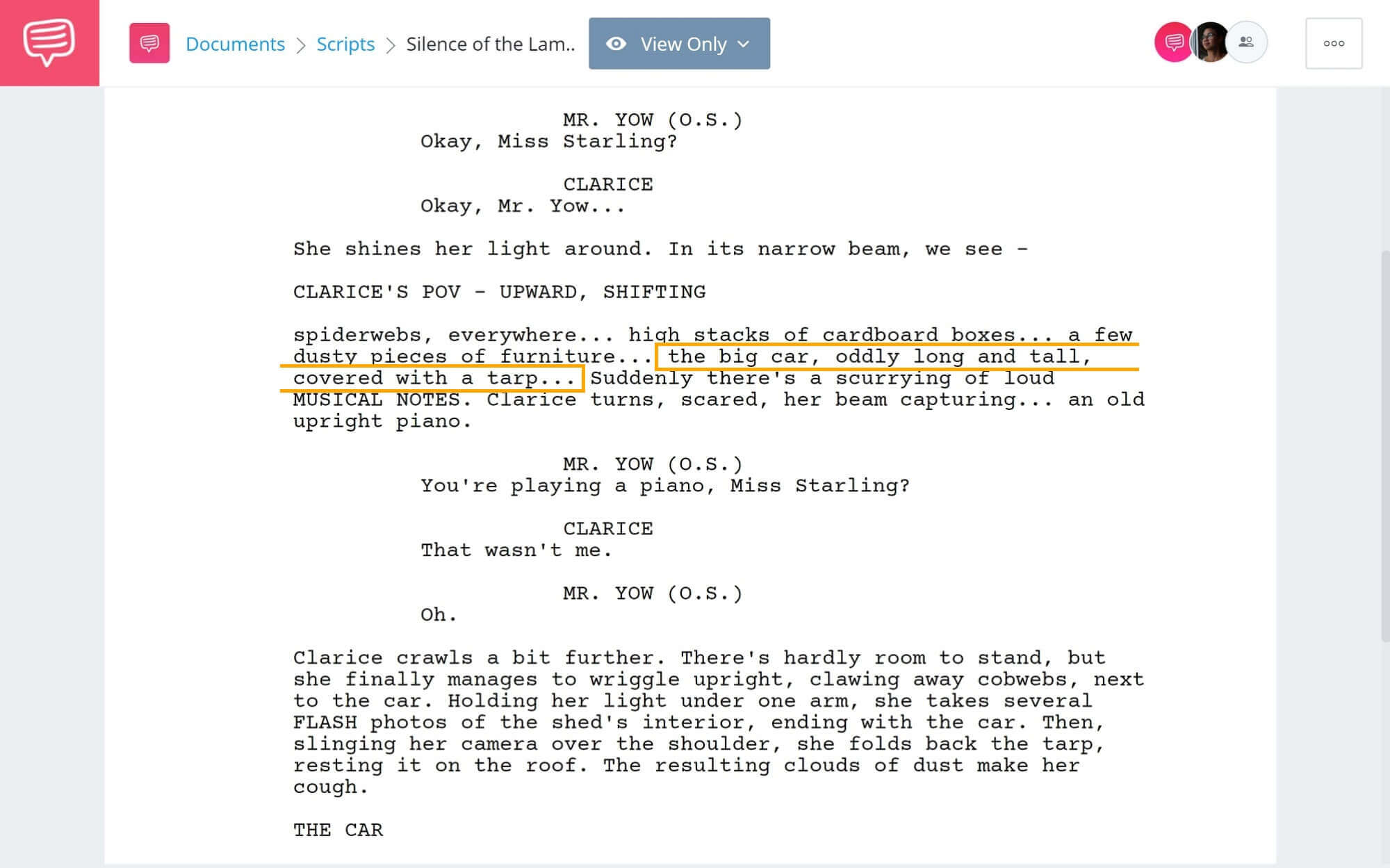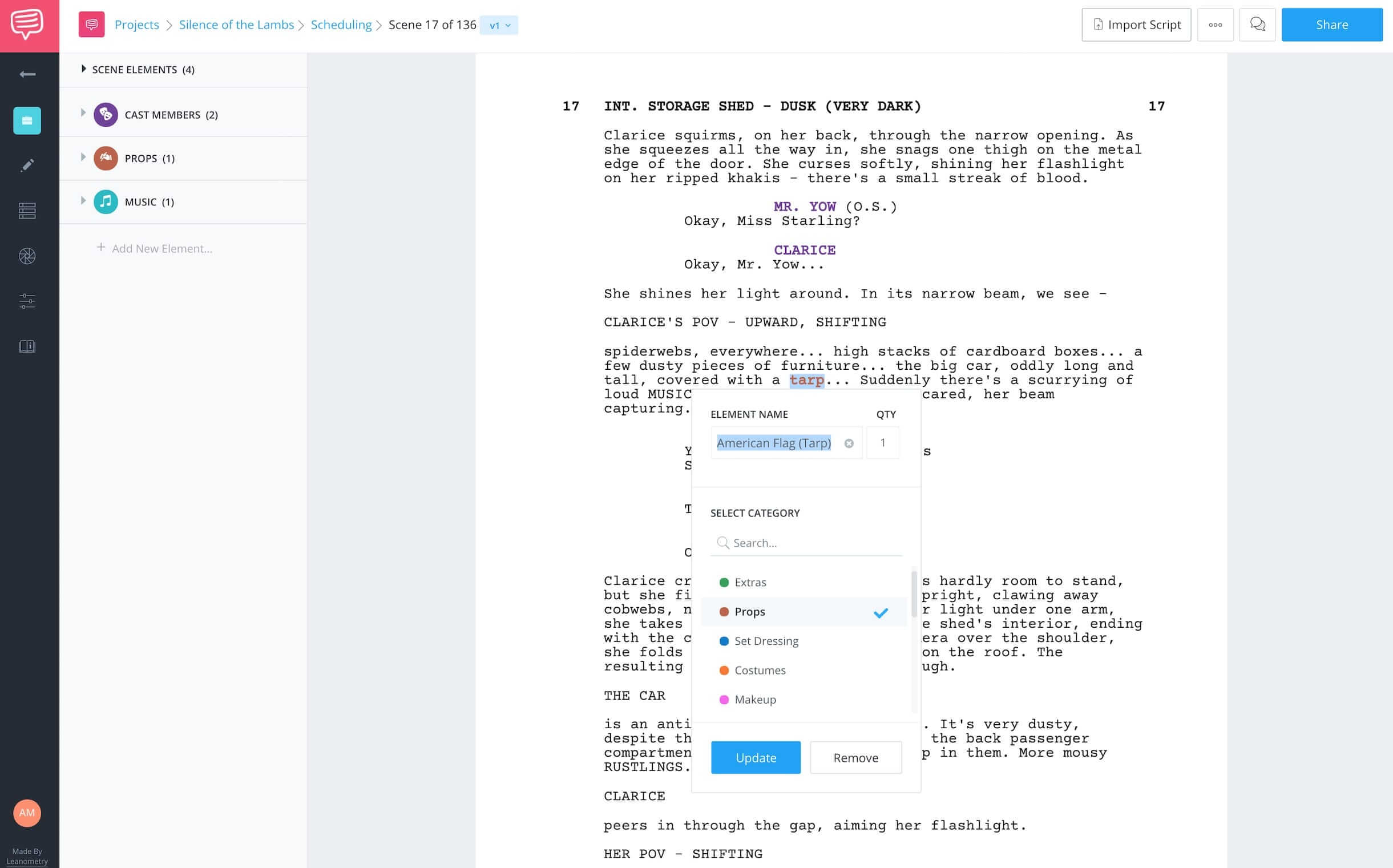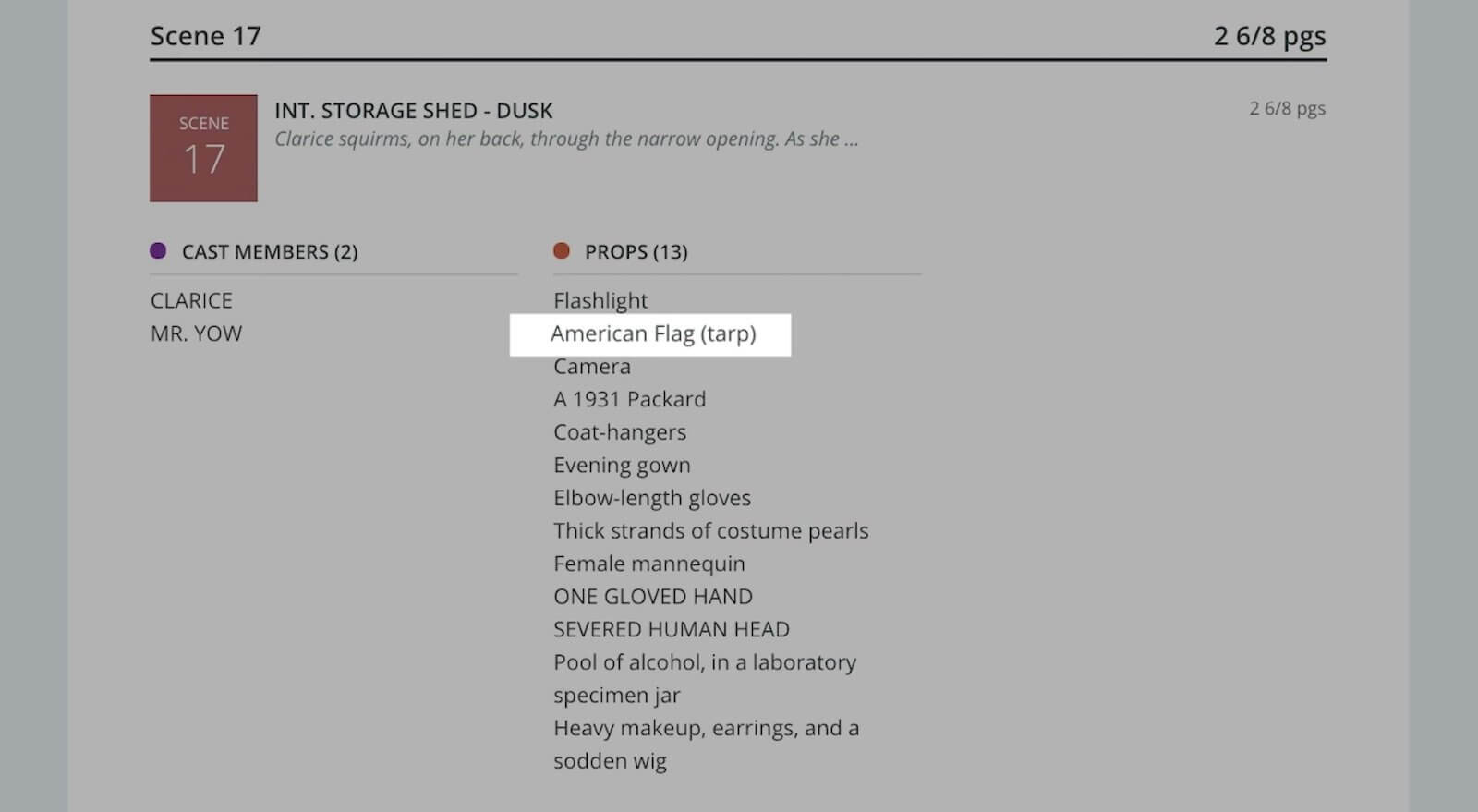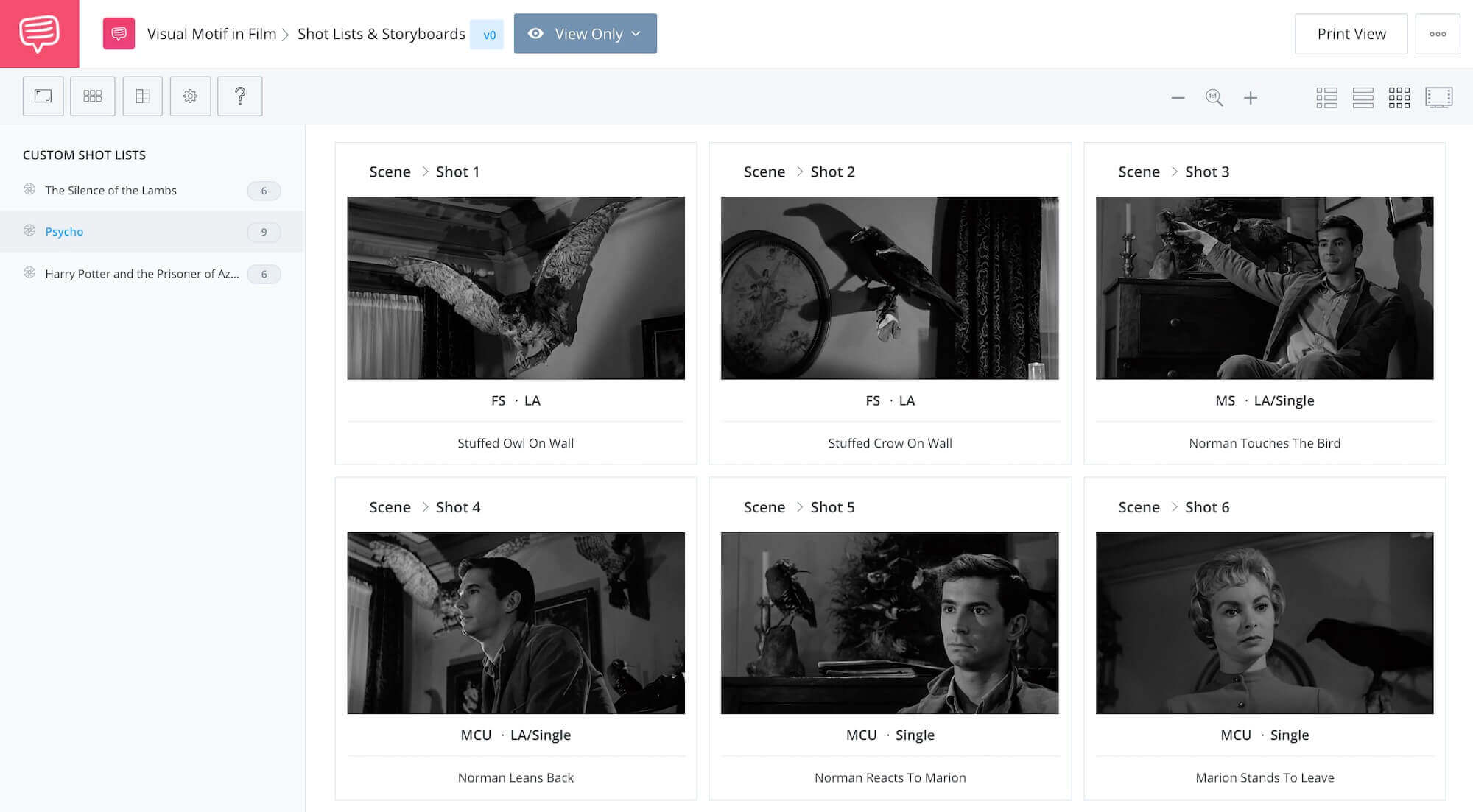Motifs are a great way to reinforce the theme of your project. Understanding how to build motifs that work requires strong attention to detail and a clear game plan. But what is a motif? Looking for a clear motif definition? Need motif examples in film? All these questions and more will be answered as we dive into the patterns and symbols that can bring depth to your work.
How Create Themes with Motifs: Coen Bros. & Desks
what is a motif?
How filmmakers define motif
Motifs have been used since the birth of cinema, and they’ve grown into one of the best narrative devices in film and literature. Good stories aren't just "things that happen," they are events that reveal something about ourselves. They mean something and without that meaning, that's when films and novels fall flat.
The secret is finding that meaning is identifying an element that best symbolizes your theme. This could be a prop, a song, a line of dialogue — anything that encapsulates your film's message.
So, how do filmmakers define motif?
MOTIF DEFINITION
What is a motif in film?
A motif is a repeated narrative element that supports the theme of a story. A motif in film can be presented in a number of ways like physical items, sound design, lines of dialogue, music, colors, and symbols. Any motif used will vastly improve your story if it has narrative significance.
Visual motifs in film use recurring patterns through props, set design, costumes, symbols, and events to support the intended theme of a story.
What does a good motif do?
- Supports the theme of a story
- Is a recurring element in a story
- Enhances your narrative elements
This motif definition may seem simple enough, but how well you execute them will show your prowess as a visionary filmmaker.
Before we move onto our main motif examples, let's take a quick look at musical motifs. A motif in music is also referred to as a leitmotif. This could be a melody within a piece of music that is repeated, or a theme song. And what better theme song to prove this point than 007.
James Bond Theme as a musical leitmotif, Dr. No
The James Bond theme song has been used over and again since 1962, and while we get to hear the theme song at the beginning of every 007 film, we also hear it during moments that are distinctly ‘Bond.’
Whenever 007 begins to do something truly unique or some action that distills and supports the character of Bond, we will hear ‘his song.’
It doesn’t matter if you use a motif in literature, film, or in music — the central idea is that something is repeated to support a theme. Now that you have a better understanding of the meaning of motif, we can begin to talk about how this is different from theme.
motif vs theme
How is a motif different from theme?
You may be curious about motif vs theme. A theme is the central thesis for your story. You want the elements of your story to inform the underlying philosophy behind your material.
In short, a theme is what you want your story to mean. A motif is a specific element that supports and informs the theme. A theme is not dependent on the use of a motif, but often the meaning of your theme won’t be effectively communicated without them.
Wallpaper, architecture, and clothing can also use motifs. In the image below, the motif is the fan pattern, the theme (or what this motif might mean) is up to interpretation — order, conformity, unity, etc.

Japanese fan motif
So, we’ve defined motif, and showed how a they are different from theme. What’s a motif when you compare it to some other literary devices? What about motif vs metaphor?
motif vs metaphor
How is motif different from metaphor?
As stated in our motif definition, there must be a repeated pattern for something to truly be considered a motif.
If something that supports your theme occurs only a single time in a film or in a work of literature it cannot be considered a motif. Rather, it will most likely be considered a metaphor.
The key difference is the repetition. Motifs in film should be thoughtfully placed in multiple scenes so that they truly elevate the material. They need to be relevant enough to serve your story with some significance, but also have an effective message.
motif examples in movies
Motifs examples in film and literature
Let’s dive into some motif examples in movies — some of which come from book adaptations of classic and contemporary literature.
You’ll notice how each motif example takes advantage of a theme in its own unique way. So while commonplace motif examples may seem a bit overplayed, there is actually a lot of opportunity for creativity.
For example a rose (motif) represents love (theme) in Romeo and Juliet, whereas it can also represent lust (theme) in American Beauty. It’s all in how directors decide to define motif in their films.
Let’s look at some great motifs examples in movies.
What is a Motif in WWII
How Jojo Rabbit works with motifs
If you've seen Taika Waititi's Jojo Rabbit, you know that shoes are a dominant motif. If you haven't seen it, we're about to spoil the film's dramatic twist — spoiler alert!
Sometimes, when filmmakers use a motif in film, they do it with subtlety. Other times, like in Jojo Rabbit, the motif is made explicit and the meaning becomes obvious to everyone watching. In this video, we took apart this motif within the script and through how it is presented with shot composition.
What's a motif in dark comedy? • Subscribe on YouTube
The inspiring thing about these motif examples from the Coen Brothers and Taika Waititi is that they were able to take such ordinary objects (desks, shoes) and turn them into something meaningful and powerful.
What's a Motif in Fantasy
Motif examples in Harry Potter
In the third installment of Harry Potter, director Alfonso Cuarón uses a few different examples of motif, but one of the most striking is...dogs.
It begins with this scene:
Prisoner of Azkaban
As you can see, dogs are a main theme for the scene.
The dog even plays into the action and the dialogue of the scene, especially when Aunt Marge mentions that “...if there is something wrong with the bitch, there will be something wrong the pup.”
We brought the scene into StudioBinder's storyboard software so we can see how Alfonso Cuarón introduces the dog motif in this scene:
What's a motif in Harry Potter? See the full storyboard
Later in the story, Harry and his friends read tea leaves in class. By having the dog motif show up in various forms across many scenes, it brings attention to the theme.
Prisoner of Azkaban, Tea Leaves
Each instance gives the motif new meaning.
Harry is chasing the snitch during a game of Quidditch when his opponent is struck by lightning. Harry looks to the clouds as sees…
Prisoner of Azkaban, Dog Clouds
At this point, the dog motif has both informed the theme, but also the plot of the story to such an intense degree that there needs to be a narrative payoff. As mentioned in our motif definition, a motif improves with narrative significance.
So, what theme does the dog motif support? When you take a step back, you will see that Harry Potter and the Prisoner of Azkaban is about two things: Friendship & Loyalty.
Which animal is considered to be man’s best friend? Which animal is considered to be rather loyal?
motif examples
Americana in The Silence of the Lambs
We’re going to take you through the various motifs used in The Silence of the Lambs that connect the events of the story to American culture. Jonathan Demme subverts common visual motifs of Americana.
In this video, we'll explore how this motif literary device gets visualized and then we'll break down each form that this visual repetition takes.
Visual Motifs in Film • Subscribe on YouTube
1. Buffalo Bill
To begin our exploration of the visual motifs of Americana, let’s look at the main villain in The Silence of the Lambs, Buffalo Bill.
Buffalo Bill Cody was an American symbol of heroism, freedom, masculinity, and strength in the American West.
Buffalo Bill Cody
In the film, Buffalo Bill is a deliberate inversion of an iconic American figure, and this signals the film’s core statement: America is not innocent. At play is a sickness completely unique to American culture.
Demme very consciously brought Americana to the forefront of his storytelling in many different scenes throughout the film.
2. Movie Poster
Movie posters are designed to market a film but they can also act as another opportunity to define motifs in your film. Let’s look at the Americana in the movie poster:
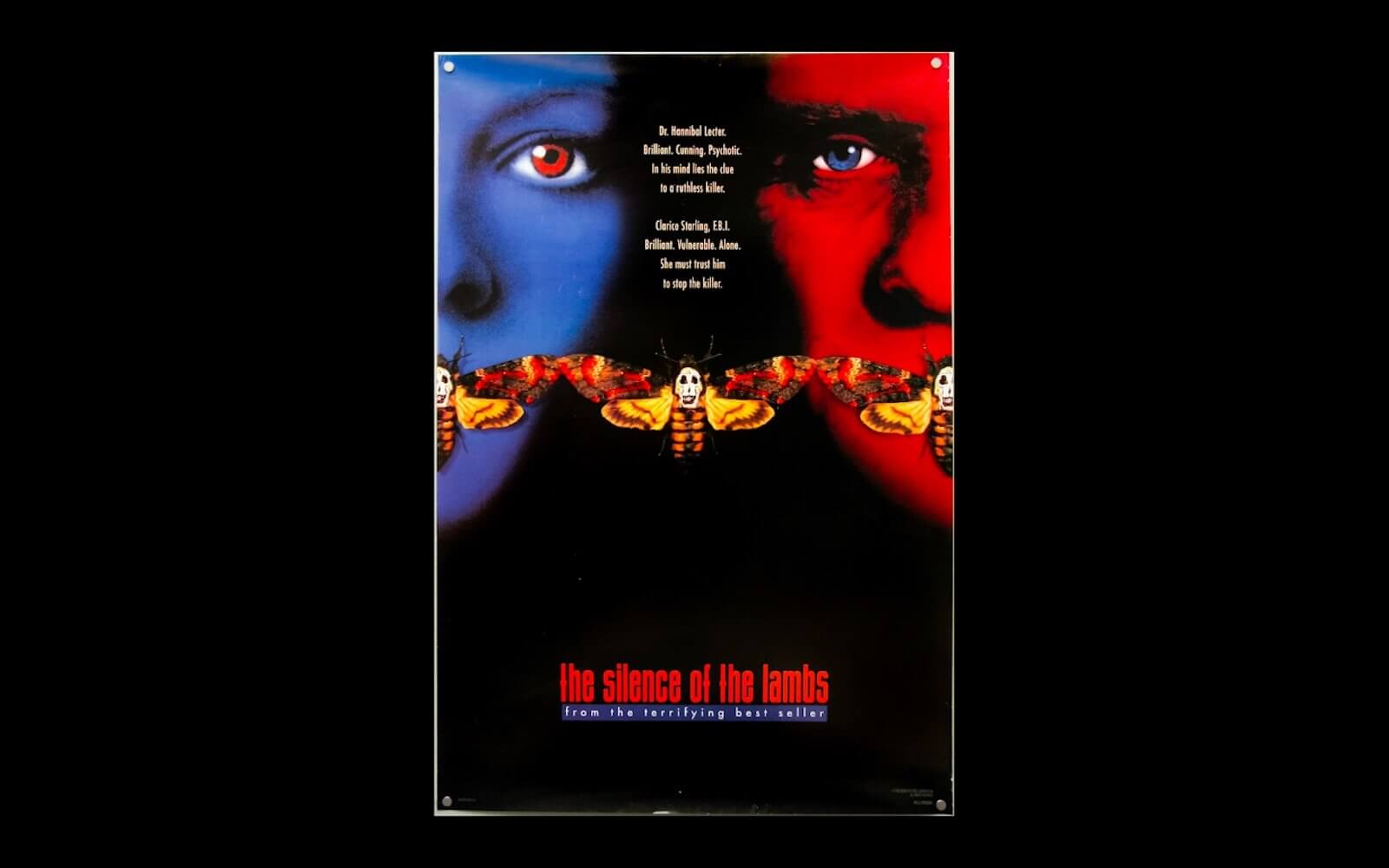
Americana in The Silence of the Lambs
The colors on this poster are predominantly red, white, and blue. It is a subtle nod to the nation's flag and only becomes significant in relation to the other motif examples in The Silence of the Lambs.
3. American Eagles
When Starling investigates Mofet’s storage unit one of the first things we see is a statue of an American eagle with wings spread wide:

Eagles in The Silence of the Lambs
Lecter also mounts a victim spread-winged like an eagle on the side of his cage, all of which is surrounded with red, white, and blue bunting.
4. American Flags
When Starling investigates the storage unit, we also see a big American flag draped over the car where she discovers the severed head.
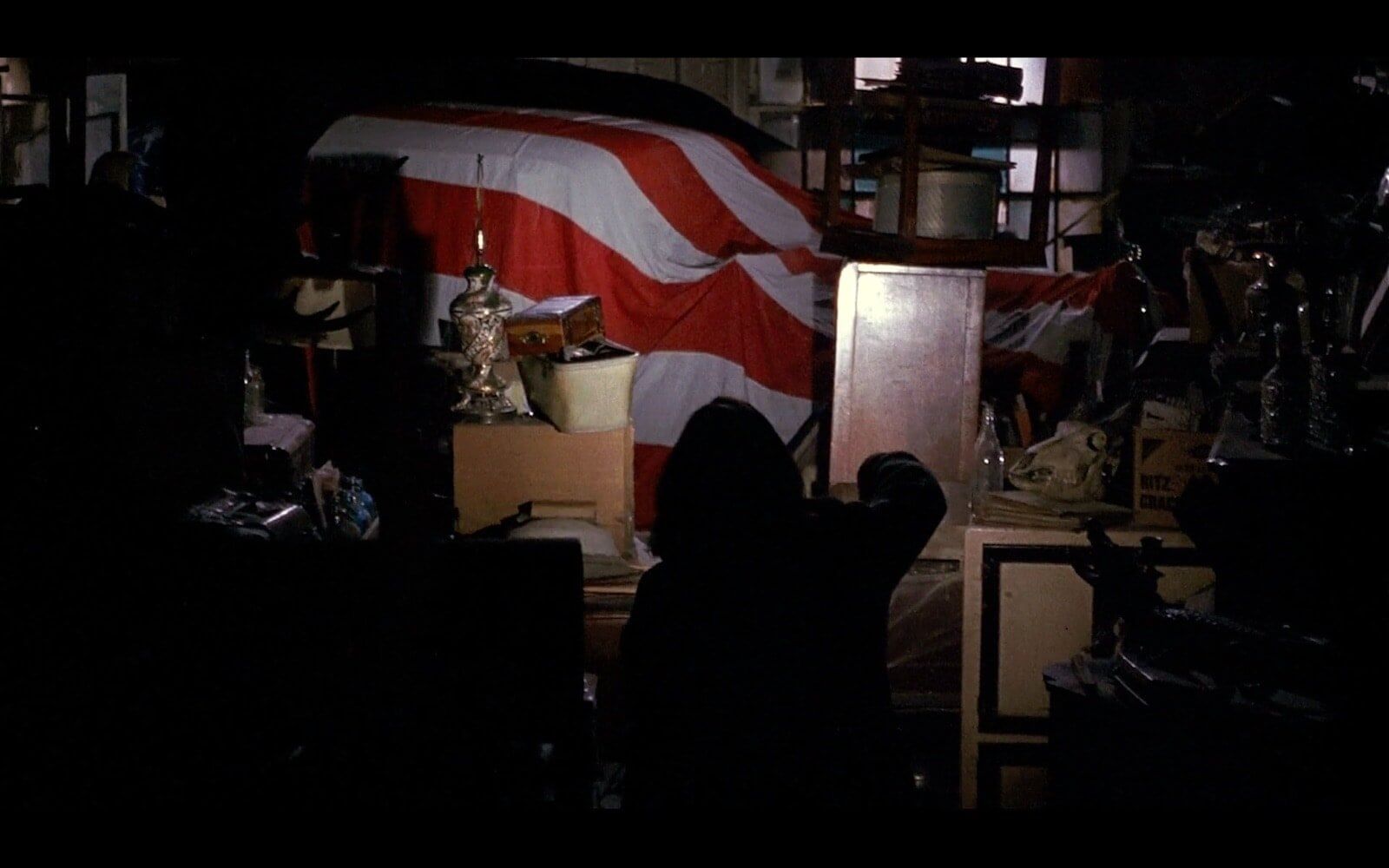
Flag motif in film, The Silence of the Lambs
There is also an American flag also draped on Buffalo Bill’s wall of terror.
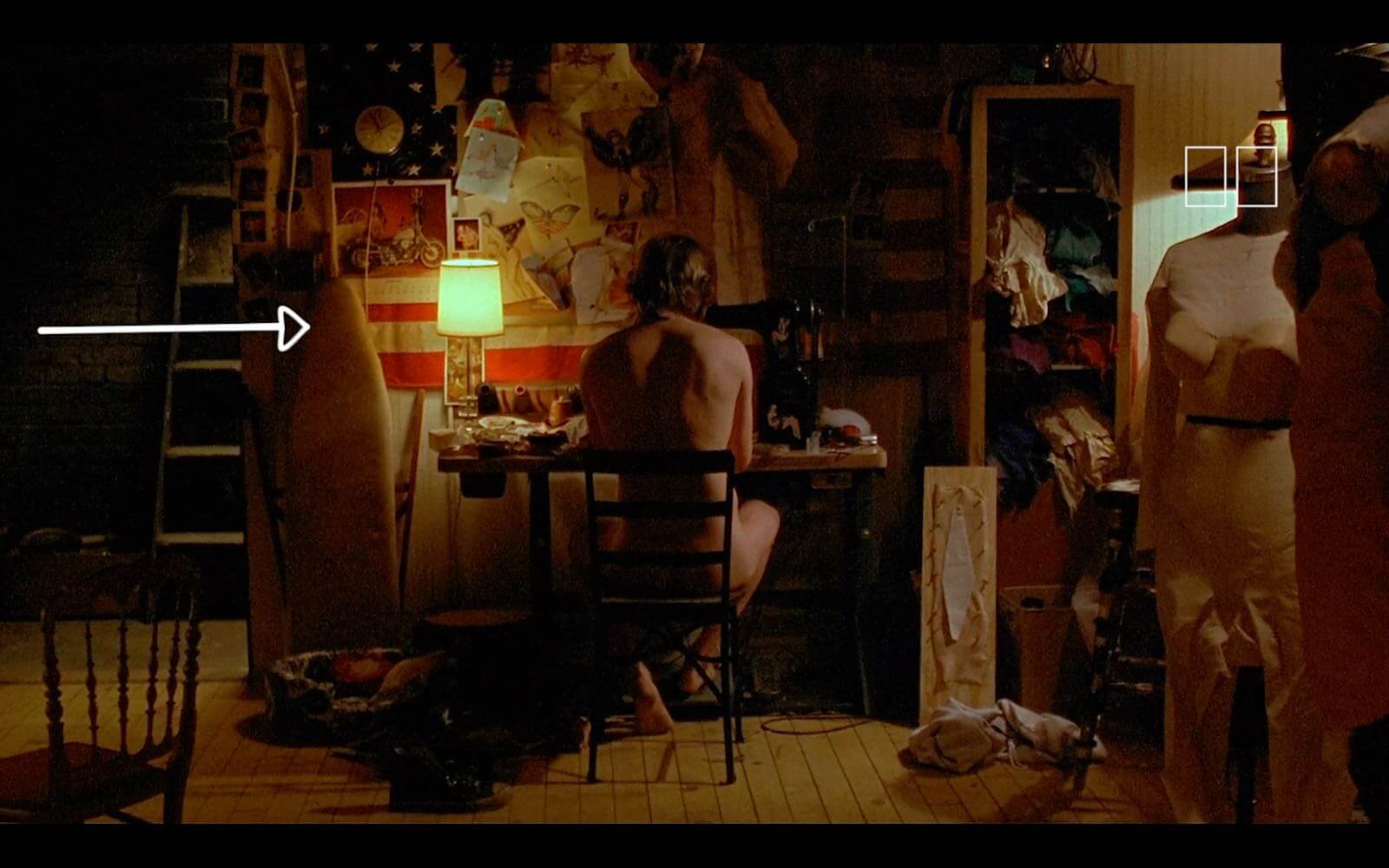
More flags, The Silence of the Lambs
When Starling shoots the window in Buffalo Bill’s basement, there is an American flag standing on the window sill.
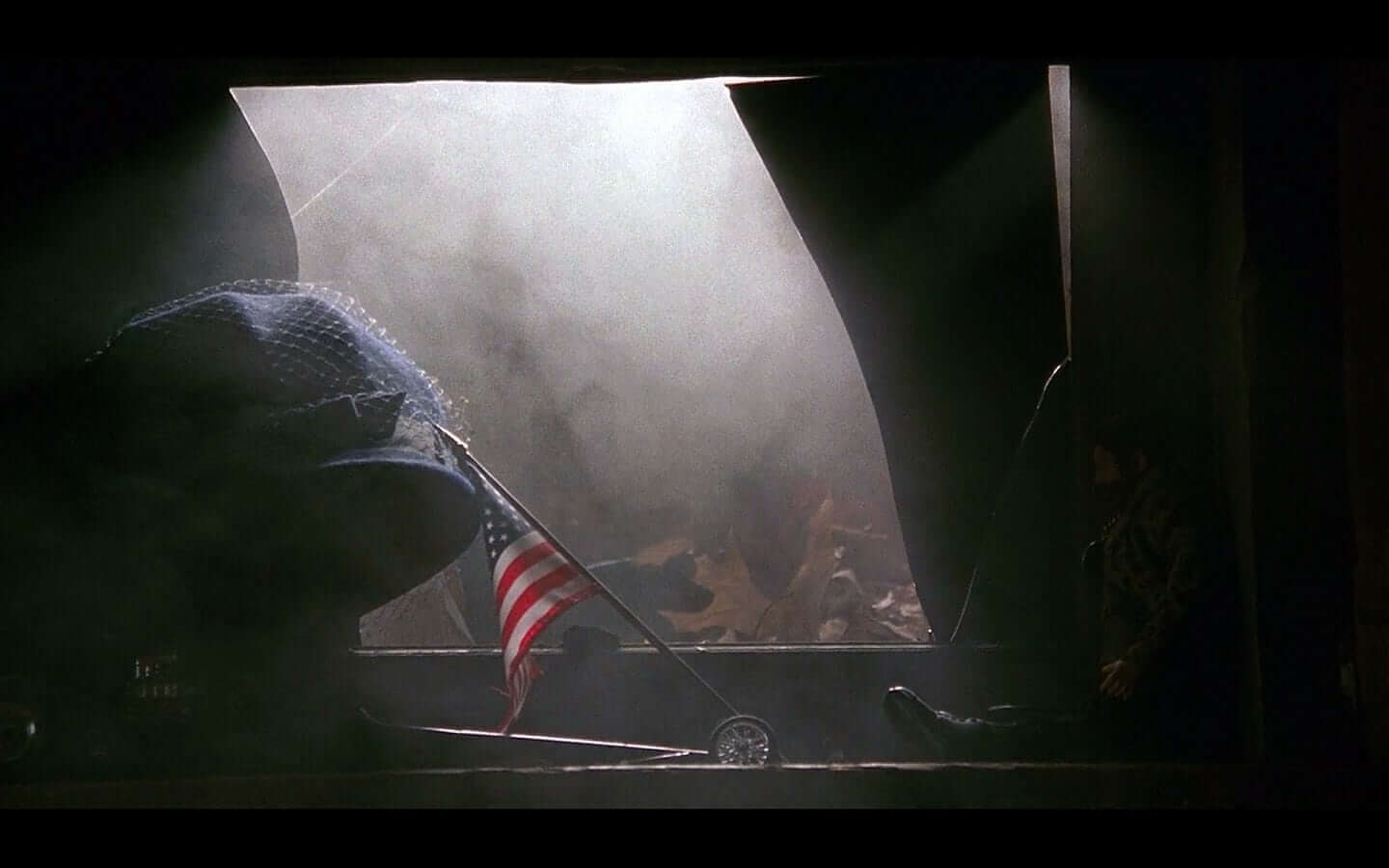
Another flag, The Silence of the Lambs
American symbolism can also be found as a decoration on a Department of Justice cake which opens up a scene near the end of the film. Let's continue with one other motif example.
5. Catherine Martin
Catherine is the daughter of a U.S. Senator who is taken by Buffalo Bill. When we first meet her she is listening to Tom Petty’s American Girl. The news graphic that describes Catherine’s disappearance features a distinctly American color pattern.
There is a great deal of subtext on gender roles in this film. Starling constantly has to deal with her place as a woman in a predominantly male driven profession.
Dr. Chilton’s Introduction, The Silence of the Lambs
Lecter seems to notice this, which allows us to connect with Lecter. But the great visual symbols hammer the point home.
creating Symbols
How to build motifs in your film
There are a few basic steps you should take that can lead to masterful execution in your next project.
1. Establish Your Theme
As a director, you’re bombarded with questions all the time, and you need to make split-second decisions that will affect your overall project.
Knowing your story’s themes will help you find quick, consistent answers. It’ll inform every decision you have to make as a director, from the color of a character’s wardrobe to the depth of field of a specific shot.
We know one theme for The Silence of The Lambs: The inversion of the American myth. What’s the theme of your next project?
2. Identify Motifs with a Script Breakdown
A script breakdown is where you identify and tag all of the requirements for each of your scenes in your film or project. These are known as scene elements.
Names, locations, props, costumes, vehicles — all of these are opportunities to define motif and serve a larger theme. When performing your script breakdown it is important to look at each element on the page and ask yourself why they exist.
Is it a necessary addition to your story? Is it an opportunity to tell your story more effectively? In the script for The Silence of the Lambs that big American flag draped over the car in the storage unit was originally just... a ‘tarp.’
What's a motif in a Script Breakdown?
Jonathan Demme and his team came up with the idea to use a rather basic item as an opportunity to inject a visual symbol in the film. They took the tarp and replaced it with an American flag.
What's a motif in a Script Breakdown?
This is a great example of how something relatively basic in the original script became an opportunity for the filmmaker to make a statement.
3. Share Your Motifs with Your Team
All of your tagged elements will generate in your breakdown reports. These reports can be shared with department keys like your Production Designer, Prop Master or Cinematographer.
That way everyone is on the same page and can being to suggest new, creative ways to enforce the theme.
Motif Examples in a Scene Breakdown Report
When performing your script breakdown, you can also add scene notes at the very bottom of the page and embed images, videos, and text.

Scene Notes, StudioBinder
There is no reason to leave anything to chance, so be as specific as you can when filling in your scene notes.
One scene in The Silence of the Lambs has a ridiculous number of scene elements including set dressing, props, and fake blood — this requires intelligent organization.
4. Shot List Your Visual Motifs
Below is a shot list for the ‘Your Self’ storage scene. Take a look and see how Jonathan Demme took the motif definition and ran with it.
You can see how the use of high angle, low angle, and POV were all used in this scene in a very effective way:
What does motif mean in The Silence of the Lambs
Some of these decisions are rather subtle, but the effect that each has on the viewer adds up, and builds an experience for the viewer.
Final Example
How Hitchcock used motifs in Psycho
Birds are also commonly used in film as a metaphor to represent freedom, but one film where they are graduated to a full-blown motif is in Hitchcock's Psycho.
The film begins in Phoenix. Marion’s last name is Crane. ‘Bate’ is a term used to describe a raptor flapping its wings. Norman has a very large number of stuffed birds in his parlor.
These stuffed birds aren’t just in the frame, but each type of bird used at specific moments actually informs the relationship of these characters and supports the emotion behind each line of dialogue.
Check out the shot list below to see how Hitchcock used this repetition in a critical scene between Marion and Norman:
Motif Examples in Film •. StudioBinder's Shot List
Norman also tells Marion that she, “eats like a bird.” This symbol is supportive of the theme of the overall film — Predator vs. Prey. It also supports the emotional shifts during the scene.
Related Posts
Up Next
Creative examples of match cuts
Everyone loves to see a great scene transition, but how do you connect your scenes in a cinematic manner that creates a deep connection?Consider using a match cut. We'll discuss how to build effective match cuts for your next film with creative examples in film.
Up Next: Match cuts →
Easily create script breakdown sheets online.
Import scripts. Tag elements like props, wardrobe, and cast. Create breakdown summaries and DOOD reports in a snap.


